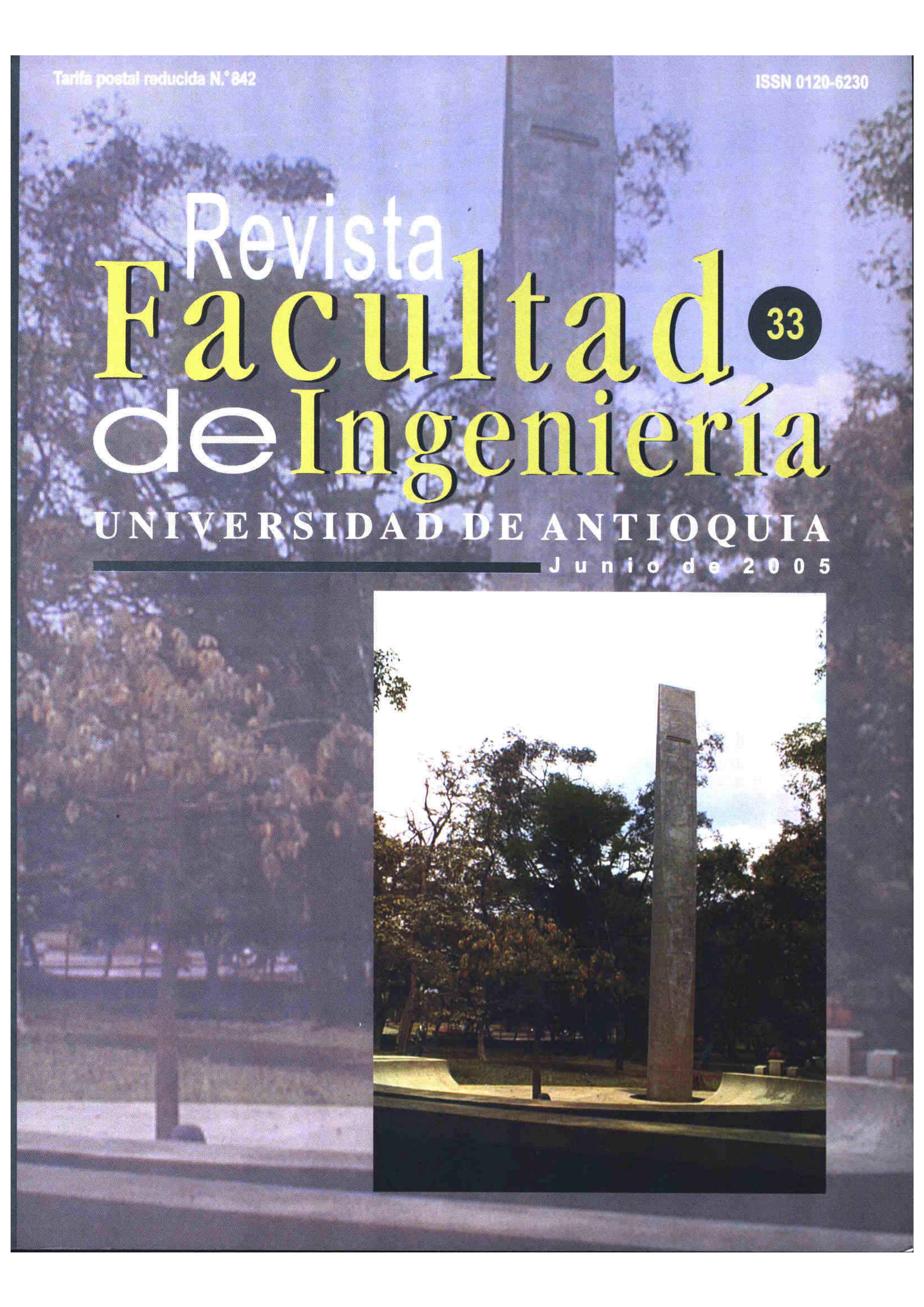Comparación del funcionamiento mecánico, termodinámico y ambiental de motores operando con gasolina y gas natural de La Guajira
DOI:
https://doi.org/10.17533/udea.redin.344302Palabras clave:
gas natural, gasolina, combustión, consumo de combustible, emisionesResumen
En este artículo se presentan los resultados experimentales del funcionamiento mecánico y ambiental de un motor Toyota Hilux 2.400 cm3 . con relación de compresión 9:1 y el diagnóstico termodinámico de un motor de ensayos normalizado de relación de compresión variable ASTM-CFR monocilíndrico, operando con gasolina y gas natural de La Guajira. Al usar gas natural en el motor Toyota se observó que para mantener la misma potencia se produce un incremento del consumo específico de combustible cercano al 20%, sin embargo el costo específico (pesos/galón equivalente) está cercano al 50% a su favor. El rendimiento volumétrico mejoró alrededor del 10% respecto a la gasolina. Las emisiones de CO disminuyeron alrededor del 40%. Al hacer la comparación en términos termodinámicos en el motor CFR para una relación de compresión de 9:1, se observó que al usar gas natural de La Guajira, la potencia indicada disminuyó en 12,5%, la presión máxima de combustión disminuyó alrededor del 17%, lo que implica disminución proporcional en la temperatura instantánea cercana al 20% para las mejores condiciones de operación del motor. El coeficiente convectivo de transferencia de calor disminuyó alrededor del 28%. La primera fase de la combustión se duplica respecto a la gasolina al mantener el mismo ángulo de avance de chispa. Al usar un avance 15º por encima del establecido para gasolina, esta fase se hace similar.
Descargas
Citas
Agudelo, John R. et al. “Influencia de la configuración del kit de conversión en el desempeño mecánico-ambiental de un motor de encendido provocado bicombustible”. Revista Facultad de Ingeniería, Nº. 31. Universidad de Antioquia. 2004.
Castaño, Diego y G. Patiño. “Estudio de los factores que inciden en el desempeño de motores de encendido provocado (mep) convertidos a gas natural”. Monografía Universidad de Antioquia. 2003.
Acevedo, Carlos. “Estudio sobre la influencia de la composición química de los principales gases naturales colombianos sobre el rendimiento de la conversión y el desempeño mecánico de los motores a gas en Colombia”. Monografía Universidad de Antioquia. 2003.
Prueba piloto de Gas Natural Vehicular —GNV— UPME. Contrato Nº. 173. Bogotá, Dic,. 1998.
Agudelo, John R. et al. “Influencia de la tecnología de conversión sobre el comportamiento de motores de gasolina convertidos a gas natural”. En Revista Ingeniería y Desarrollo. Nº. 11. Universidad del Norte. Barranquilla, Colombia. Enero-julio 2002, pp. 28-41.
Evans, R. L. y Blaszcczzyk, J. “A comparative study of the perfomance and exhaust emissions of a spark ignition engine fuelled by natural gas and gasoline”. Journal of Power and Energy, Instn Mech Engrs, Vol. 211 Part D, 1997, pp. 39-47. DOI: https://doi.org/10.1243/0954407971526209
Montgomery, Douglas. Diseño y análisis de experimentos. Grupo Editorial Iberoamérica. México. 1991. pp. 589.
Agudelo, J. R. et al. “Aplicación de herramientas informáticas al diagnóstico de la combustión en motores”. En Revista Facultad de Ingeniería. Nº. 22. Universidad de Antioquia. Colombia. Junio de 2001. pp. 106-115.
Heywood, John B., Internal combustion engine fundamentals, McGraw-Hill, Nueva York. 1988.
Muñoz T., Manuel y Francisco Payri. Motores de combustión interna alternativos. Sección de publicaciones de la ETSII de la Universidad Politécnica de Madrid. 1985.
Yoseffi D, et al. “A comparison of the relative effects of fuel composition and ignition energy on the early stages of combustion in a natural gas spark ignition engine using simulation., Proc. Inst. Mech. Engrs., Part D, Journal of Automobile Engineering (2000), 214 (D), pp. 383-393. DOI: https://doi.org/10.1243/0954407001527709
Jones, A. L y R. L Evans. “Comparison of burning rates in a natural-gas-fueled spark ignition engine”. Transaction of the ASME, Journal of engineering for gas turbine and power. Vol. 107. Octubre de 1985. pp. 908-913. DOI: https://doi.org/10.1115/1.3239835
Descargas
Publicado
Cómo citar
Número
Sección
Licencia
Los artículos disponibles en la Revista Facultad de Ingeniería, Universidad de Antioquia están bajo la licencia Creative Commons Attribution BY-NC-SA 4.0.
Eres libre de:
Compartir — copiar y redistribuir el material en cualquier medio o formato
Adaptar : remezclar, transformar y construir sobre el material.
Bajo los siguientes términos:
Reconocimiento : debe otorgar el crédito correspondiente , proporcionar un enlace a la licencia e indicar si se realizaron cambios . Puede hacerlo de cualquier manera razonable, pero no de ninguna manera que sugiera que el licenciante lo respalda a usted o su uso.
No comercial : no puede utilizar el material con fines comerciales .
Compartir igual : si remezcla, transforma o construye a partir del material, debe distribuir sus contribuciones bajo la misma licencia que el original.
El material publicado por la revista puede ser distribuido, copiado y exhibido por terceros si se dan los respectivos créditos a la revista, sin ningún costo. No se puede obtener ningún beneficio comercial y las obras derivadas tienen que estar bajo los mismos términos de licencia que el trabajo original.










 Twitter
Twitter